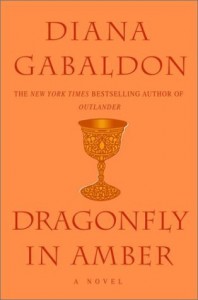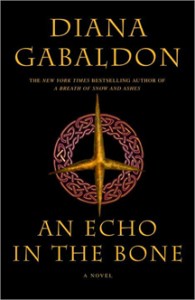Social media hashtags: #DailyLinesWithBusiness, #MinnieAndHalsNovella, #Outin2017
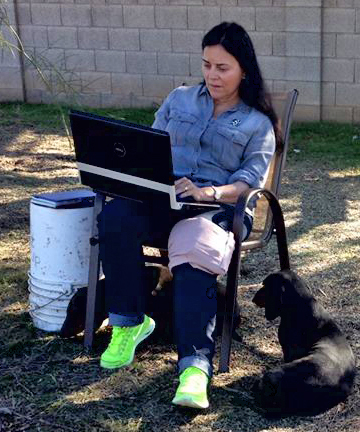 This blog entry is actually part of a longer piece called "Want to Watch Me Write?" that I’m putting together in desultory fashion, between other things. It’s a modest example of what-all goes on my head while I’m writing, including all the thinking that happens before, during and after the writing of a single scene.
This blog entry is actually part of a longer piece called "Want to Watch Me Write?" that I’m putting together in desultory fashion, between other things. It’s a modest example of what-all goes on my head while I’m writing, including all the thinking that happens before, during and after the writing of a single scene.
Our scenario is that it’s 1743, Harold Grey is struggling to raise his father’s defunct regiment, and has just shot a man named Nathaniel Twelvetrees, who had seduced Hal’s wife (she’s just died a month ago, along with the child to whom she gave birth—and Hal doesn’t know whether it was his or not). Hal’s not very stable emotionally at the moment, and his anxious friend, Harry Quarry, is sticking close by him as Hal goes to call on an officer with a good reputation, whom he’d like to recruit for his new regiment. The man lives in a Georgian terrace—a line of upscale townhouses, facing a common fenced park. Hal and Harry pause by the park, opposite the house they intend to visit. This is the thinking-while-I-write versions of the scene’s beginning; I’ll show you what the (more or less) finished version looks like at the end:
Hal reached through the iron bars of the fence and tweaked a leaf [carefully broke a twig] from one of the bushes [a small tree].
“What are you doing?” Harry demanded, stopping in mid-stride. “Picking a bouquet for your button hole? [ck. Period use of “bouquet” for this, though pretty sure I’m right]
[What does the leaf look like? I want it to be something either striking or aromatic… flip over to Google, “English shrubs,” and within a few clicks get “Seven Fuss-Free Shrubs for your Garden,” with pictures, the first of which is Crataegus persimilis, ‘Prunifolia’—the cockspur thorn, which has “few but very long and sharp thorns” and the instant I read that I know what’s going to happen…]
“No, I wanted to see if this is what I thought it was, but it is.”
“And what’s that, pray?” Harry gave the [wait a minute—have just thought maybe it isn’t a leaf he picked—that’s not the most interesting bit of that plant. Quick shufti beginning with “What does hawthorn smell like” (having picked up that cockspur thorn is a hawthorn, and hit paydirt in several directions. “Hawthorn” is one of the oldest words in English, has a great history in terms of English landscaping, the leaves are said to taste like bread and cheese (at least they’re edible), and (best of all) “the flowers have a scent that is said to be that of a woman sexually aroused.” O, serendipity…]
“And what’s that, pray?” Harry came back a step to look at the twig in Hal’s hand. [go back up and change “tweaked a leaf”] The foliage was cool in his hand; it had rained a bit earlier and the leaves and flowers [this had better be set in springtime, so I can have flowers] were still damp [no “wet” is better, he feels the water on his palm], were still wet, water droplets sliding down his wrist [the inside of his wrist?], disappearing into the cloth of his cuff [frill of his cuff? He’s a dressy man, but “cloth” is alliterative, and would he have a frilled shirt-cuff with his uniform? I like the visual of “frill,” let’s go look (I have a book of British uniforms of the 18th century in my office that would answer this instantly, but as usual, it’s in Arizona and I’m in Ontario, so…)]
[Hiatus of four days, owing to working non-stop at the Fergus Scottish Festival and Highland Games, flying back from Toronto, and then dealing with all the stuff that piles up here when I’m gone for more than 24 hours…]
[Not that I have written nothing in those four days; I’ve done four bloody email interviews, sixteen complicated emails dealing with business; printed, read and signed three different contracts (for the artwork in “I Give You My Body…” which came out yesterday! And arrived as an Amazon #1 Bestseller, which is gratifying. For reasons best known to Amazon, they listed the category as “memoirs”…), for a novella/short story collection, and for a short piece for an odd anthology of car stories (don’t ask; I’ll tell you about it when it comes out in November). Also wrote small pieces of a Book Nine scene and pulled together both a small chunk of Book Nine and a small chunk of Minnie and Hal.]
Where was I? Oh, frills. On the good side, where I am is back in my office, and as expected, a quick glance at UNIFORMS OF THE AMERICAN REVOLUTION (by John Mollo, Illus. Malcolm McGregor, published 1975 MacMillan) show me that yes, indeedy—infantry officers did wear frilled shirt cuffs—though no other regiments’ officers seem to have. So now we have that settled…
Here’s what I’ve actually got of this scene so far:
“Hal reached through the iron bars and carefully broke a twig from a small tree growing by the fence.
“What are you doing?” Harry demanded, stopping in mid-stride. “Picking a bouquet for your button hole?”
“No, I wanted to see if this is what I thought it was, and it is.”
“And what’s that, pray?” Harry came back a step to look at the twig. The foliage was cool in Hal’s hand; it had rained a bit earlier and the leaves and flowers were still wet, water droplets sliding down his wrist and soaking into the cloth of his frilled cuff.”
This doesn’t look like much—and it’s not—but it is a kernel. It’s my way into the page and into this scene. Hal and Harry are moving and speaking, and it will be pretty easy to pick up this conversation when I come back to work on this scene tonight, because obviously Hal’s going to tell Harry that it’s cockspur thorn, continue with the leaves tasting like bread-and-cheese as they cross the street and go up the steps of the house, and end with the scent of the flowers, Hal handing the twig to Harry while he rings the bell [ck if houses had bells in 1743, or only knockers], and as the door opens [to reveal whom? We don’t know…], Harry is discreetly sniffing the flowers, which he puts in his own buttonhole as he follows Hal inside.
But now you see why it takes awhile to write this stuff…
Selected Social Media Comments:
Below are some reader questions about this post from my Social Media accounts (in bold type) with my replies, selected by my Webmistress. Before anyone asks, no, we can’t copy and paste ALL of the comments. <g>
With so many writing projects going on, how do you keep them all straight and not confuse characters and plot lines?
How do you know you just had lunch with your husband and not your best friend? They’re just different things.
“Life is in the details.” Am I right to imagine that you have a general sense of the plot before you start writing, but the details come to you as you write? You’ve told Sam how the series will end, so you know where the plot needs to go, but getting there seems unmapped. I love that you take the readers along for a ride outside the book as well as in it. THANKS!
No, I have no idea of the plot. I don’t plan books out ahead of time, I don’t work with an outline, and I don’t work in a straight line. <g> I have the end of the series, but it actually isn’t part of the plot, if that makes any sense..…
What a gift! This post is a little mini-movie of the written word which helps those of us struggling to become writers. A process. Insight. It may not be ours, but that’s ok! So exciting to see a process that is unique and you and not a regimental set of steps—to get from first word to last. Thank you!
Have never understood why people think a) that there is “a regimented set of steps” to writing something, nor yet b) why you’d follow such a plan if there was one. <g>
I’ve been reading I GIVE YOU MY BODY and I love it as much as any of your books. If there are any of your books, it’s because I haven’t found them! Including the co-written ones with Sam Sykes!
There aren’t any books co-written with Sam. His novels are entirely his own.
Webmistress’s note: Fantasy author Samuel Sykes is Diana’s son. Check out his home page for more information about his work:
http://www.samsykes.com
I love seeing your process. It makes total sense to me to add those notes (like go back and change x) while you go instead of breaking the train of thought. Thanks for sharing!
But I don’t add those notes; they’re shown here, but in real-time, that’s what I’m thinking—and while I sometimes leave square brackets for a specific piece of missing information—“[tree]”—more often I just go find/check what I need right there—since what I find may well affect what comes next/later.
I have a question related to this, Diana! What does your work with editors look like? Is it very developmental, with constructive feedback shared throughout drafting? More focused on high-level looks at certain checkpoints? Something else entirely? Given your long history as a writer I’m just curious about that part of the process as well. Editor/author dynamics can be so diverse and interesting.
No. <g> I don’t write in drafts, and the way I do write would be impossible for anybody else to have much impact on. I write the book, and when I think it’s finished, I send it (sometimes in chunks, but that depends on the book and how it’s coming together for me) to my U.S. and U.K. editors, and they both send back comments. Some are purely mechanical—catches of repeated passages or imagery, minor confusions of timeline, straightforward typos or minor errors, etc.—and some are asking for clarification of some point or expressing a minor reservation about something—and those are left up to my judgement. But every editor works differently with different writers.
How do you keep these tidbits organized? Do you have multiple pages/tabs? Way back when I had to write papers, we used index cards and outlines. I keep trying to picture your organization as you have said you might write down incidents way ahead of when they fit in into any book. You amaze me ! Love your writing! Thank you for all the enjoyable hours.
It’s just in my head. I do “organize” my scenes, insofar as I give each scene a unique filename so I can find it when I want it. <g> A file name consists of a word signifying which book it is (all the main Outlander novel are called “JAMIE” — JAMIE, JAMIE2, JAMIE3, etc.; we’re now on JAMIE9. Whereas THE SCOTTISH PRISONER was called “PRISON” and BROTHERHOOD OF THE BLADE, “BROTHER.” Each new book has its own folder/directory, into which all its files go.
The filename then has a symbol indicating the year of creation, followed by a dot and a 2-3 digit extension that indicates the date on which I began work on that scene/file. So a scene that I began today, for instance, in BEES, would be called JAMIE9@.91 .One started tomorrow would be JAMIE9@.92, and so on. Files for BEES from 2015 were all called JAMIE9!.(date).
The other component of this very crude organizing system is a file (there’s one for each book) called the MFILE (for “Master File”). This is just a list of the filenames, each being followed by several keywords:
JAMIE9@.313 – coon hunt, Bluey
JAMIE9@.818 – Smokeshed, Brianna and Fanny
etc.
So when I write what comes after “Smokeshed,” I can open the MFILE and do a quick search for “One an officer” and I’ll find JAMIE9&.92 (because that’s what I’ll be working on tomorrow).
As to putting the pieces together… I think in shapes. Geometrical shapes. And so sometimes the pieces flow together because of their content (“Root cellar” follows “Smokeshed,” for instance), but sometimes because of the way they fit together, which wouldn’t be easily describable in words, but which is intuitively obvious to ‘em.
What size hard drive do you need for that? Do you have a backup system?
Text/document files really take very little room (though I think I have a 2-gig hard disk in this machine). I have all my writing folders embedded in Dropbox, so when I save to my hard disk, the same file goes automatically to Dropbox (which not only serves as backup, but is accessible from any other of my devices, so I can retrieve the file I made on my Alien (which is huge and weighs nine pounds) to the Mac Air that I travel with—or, in a pinch (if called on unexpectedly to read an excerpt somewhere) I can pull something into my iPad and take it on stage.
That said, I do also back up the most important files once a week to both a thumb-drive and the external Time Machine backup for the Mac. I also print out the scenes as I finish them, for my husband to read, and I throw the annotated copies (after I’ve read them <g>) into a storage box—just in case of EMP’s.
Your writing is very tight. When you include a detail, it is likely to be important or significant later. How far ahead do you look when writing? Did you know that John Grey was going to reappear so many times in so many books? You bring back so many characters when we think we have seen the last of them. Is there a big picture somewhere?
The bigger picture just emerges as I work. People think this or that is clever foreshadowing— when all it is, is that I looked back from some further vantage point and said, “Oh, I could use that bit here, couldn’t I?” <g> (A story doesn’t run in only one direction.)
I think your mind works a lot like mine does. It’s highly nonlinear thought processes that you’re showing here, but there’s a logical flow down each side-path. I wonder if that’s the scientist in us… At any rate, I enjoyed the walking tour of your method, and it is even clearer to me now what a labor of love your writing is. Every scintilla of detail, down to the degree of moisture on the plant, is finely crafted. Thank you for being such a conscientious creator of your world!
Linearity is by no means the only model of logic. <g>
How do you separate fiction from reality? When I am engrossed in one of your books, I feel that I’m looking at the moment through the characters of the book, if that makes sense. The characters seem so real but not. Yet you are living it daily. Probably thinking about the next scene or paragraph of any given project at the time.
Fiction is just a different reality.
I love your brain! Just how many of YOU are in that head?
I’ve never tried to count…
Thank you so much for sharing. I have an idea for something I’d like to write about. I’ve begun the research process but have been lamenting about how to write it. Seeing your process made me realize that my approach is similar to yours and so it begins… Thanks for the inspiration.
All you gotta do is start—and then don’t stop. You’ll figure out the how (or rather, which “how” works for you) as you go.
Everybody’s brain is wired up differently; the key to succeeding (as in, get words on paper <g>) is to figure out how your own brain works best, and work with it, rather than trying to force it into some preconceived notion of “how it’s done.”
You always type your writing? And never write it out in longhand?
If I wrote in longhand, it would be illegible within seconds; I change words, sentences, paragraphs, clauses, pretty much nonstop.
“Desultory” was not in my vocabulary before I read the OUTLANDER series. <g> Nor was “peremptory.”
Stick with me, kid… I can teach you a lotta words…
This blog was first posted on my official Facebook page on September 1, 2016, and appears here with a few selected social media questions/comments and my replies.
Posted on September 13, 2016 5:45 AM
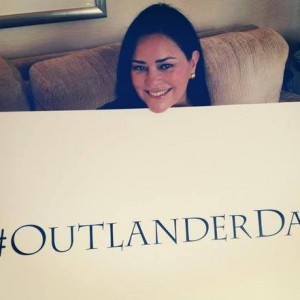 You know, if there’s something you want to do… I think you should just go ahead and start doing it, and see what happens.
You know, if there’s something you want to do… I think you should just go ahead and start doing it, and see what happens.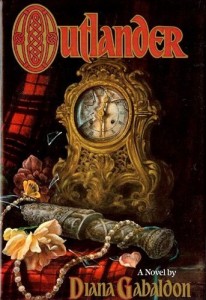 And in honor of World Outlander Day (evidently that’s today—June 1st. Who knew…?) — here’s a bit of one scene that’s not in the TV show, but that the book readers know well…
And in honor of World Outlander Day (evidently that’s today—June 1st. Who knew…?) — here’s a bit of one scene that’s not in the TV show, but that the book readers know well… “Jamie,” I panted.. He pushed his kilt out of the way and pressed my hand against him.
“Jamie,” I panted.. He pushed his kilt out of the way and pressed my hand against him.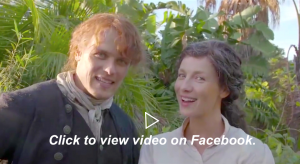

 Someone asked what I planned to do for my birthday on Wednesday, January 11: to which I replied, “I’m going to make garlic pinenut chicken and eat ALL of it!”
Someone asked what I planned to do for my birthday on Wednesday, January 11: to which I replied, “I’m going to make garlic pinenut chicken and eat ALL of it!”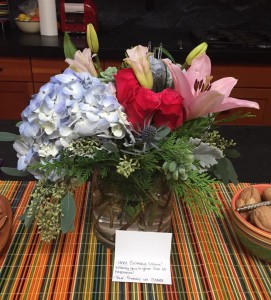
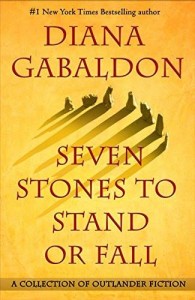
 In which, Lord John Grey’s encounter with said eel (to say nothing of a belligerent poet and Dr. John Hunter (a real surgeon, known for his great contributions to medicine, but known more colloquially in his own time as “the body-snatcher”) leads to him being sent to the wilds of Canada (pretty wild at the time), where he joins General James Wolfe, has sex on a sandbar (though not with General Wolfe), repels Indian attacks (though not necessarily all Indians…) and (among other things) climbs a sheer cliff at night with a number of Scottish Highlanders, in order to attack the Citadel of Quebec.
In which, Lord John Grey’s encounter with said eel (to say nothing of a belligerent poet and Dr. John Hunter (a real surgeon, known for his great contributions to medicine, but known more colloquially in his own time as “the body-snatcher”) leads to him being sent to the wilds of Canada (pretty wild at the time), where he joins General James Wolfe, has sex on a sandbar (though not with General Wolfe), repels Indian attacks (though not necessarily all Indians…) and (among other things) climbs a sheer cliff at night with a number of Scottish Highlanders, in order to attack the Citadel of Quebec.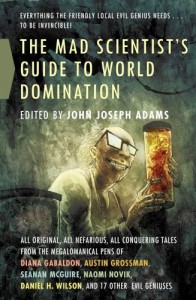
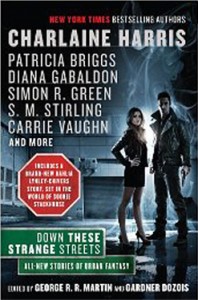
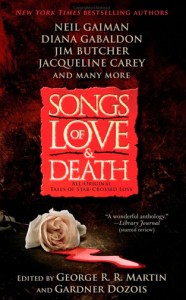
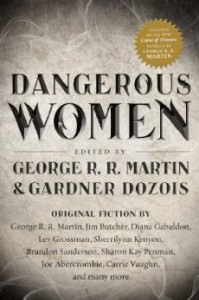

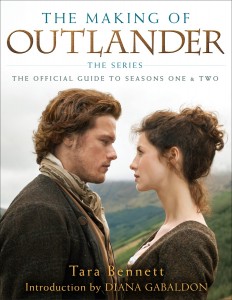

 This blog entry is actually part of a longer piece called "Want to Watch Me Write?" that I’m putting together in desultory fashion, between other things. It’s a modest example of what-all goes on my head while I’m writing, including all the thinking that happens before, during and after the writing of a single scene.
This blog entry is actually part of a longer piece called "Want to Watch Me Write?" that I’m putting together in desultory fashion, between other things. It’s a modest example of what-all goes on my head while I’m writing, including all the thinking that happens before, during and after the writing of a single scene. Mark me…. or, you know…. don’t….
Mark me…. or, you know…. don’t….